What Is the Temple Mount?
The Fellowship | June 7, 2023
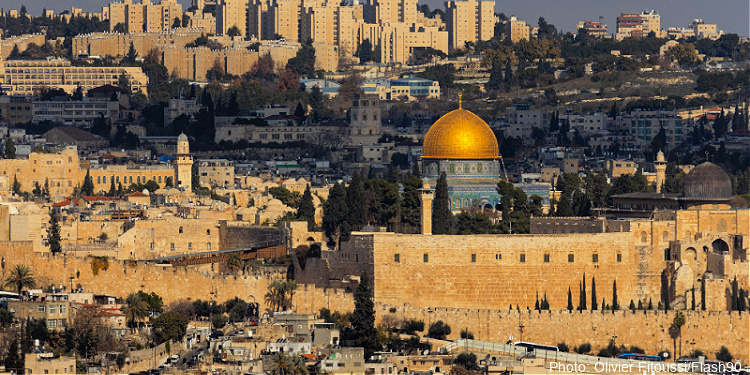
The Temple Mount, surrounded by the walls of the Old City of Jerusalem, is a place of both historical and biblical significance. Let’s take a look at this sacred place, a place that is important to the three Abrahamic religions, and which is central to life and worship in the Holy Land.
First, we’ll look at where the Temple Mount is—near both the Western Wall and the Al-Aqsa mosque, before looking underground at the ancient relics and archaeological finds that lie beneath its surface. Then we’ll look at the complicated issue of who controls the Temple Mount today—both its administration by the Islamic Waqf and Israel’s sovereignty—as well as the governmental rules and regulations on who can access the site and guidelines for worship once there.
Next, we’ll look at the central element of the Temple Mount—the Foundation Stone—and its history and significance, including the Bible story of Abraham and Isaac and the importance it has for Christians.
Finally, we’ll look at the Temple Mount’s broader importance, as a symbol of faith, unity, and understanding, and how its spiritual legacy continues to shape our world today.
Where Is the Temple Mount?
The Temple Mount lies in the heart of Jerusalem’s Old City, a place held dear by Christians and Jews, alike. As it is located near the Western Wall, its importance to the Jewish people is magnified. The Western Wall itself is a remnant of the Second Temple, a retaining wall left over from Herod the Great’s rebuilding of Solomon’s First Temple. Because of this, its direct link to Bible times and the Jewish people’s biblical worship, it still serves as an important place for Jewish prayers and pilgrimage.
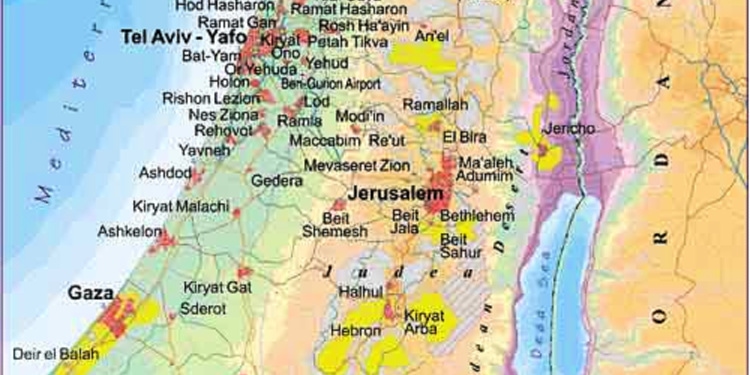
Aside from its proximity to the holiest site in Judaism, the Temple Mount is also home to Al-Aqsa mosque, one of the holiest spots for Muslims, believed to be where Mohammed embarked on his journey to heaven. While nothing remains of the mosque’s original dome, which was destroyed by a fire in 1969, the dome seen today recreates the original architecture, but with concrete and lead sheeting.
The coexistence of both the Western Wall and Al-Aqsa mosque at the Temple Mount has created a complicated interplay between those who worship there and also reminds us of the city of Jerusalem’s complex history.
And to this day, the location of the Temple Mount and its holy sites, as well as those nearby, attracts countless visitors who seek to worship there, while experiencing its historical and religious power.
What Is Beneath the Temple Mount?
Lying beneath the surface of the Temple Mount today is a captivating world of archaeological wonders and forgotten antiquities—offering a glimpse into the world of the Bible. Excavations that have been carried out through the years have unearthed entire layers of history, including the First Temple, the Second Temple, and other structures from the Holy Land we read about in God’s Word.
The subterranean tunnels and chambers below the Temple Mount hold invaluable information and insights into the past. Archaeologists digging beneath the Temple Mount have discovered mosaics, grand halls, mikvot (ritual Jewish baths), and even an underground water system. What scientists have unearthed provides us a look at the daily lives of those who lived during Bible times, including their cultural customs and their worship practices.
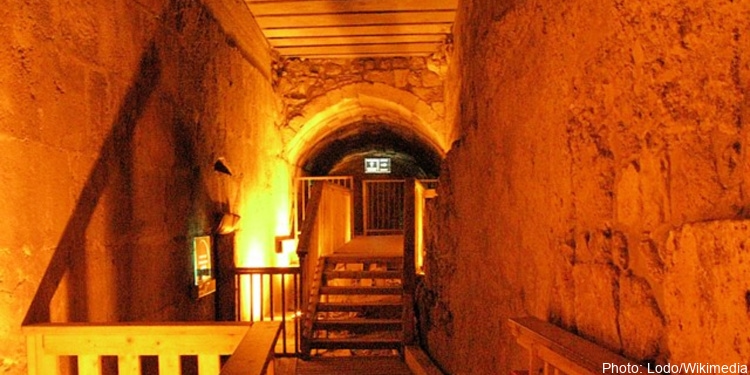
Photo Credit: Lodo | Wikimedia
Sadly, because of the sensitivity of the site, as well as its contested ownership, few true digs have been done in recent years. In fact, most archaeological knowledge of the Temple Mount comes from surveys carried out by Charles Wilson and Charles Warren, British scientists who studied the area in the 1860s and 1870s, the latter being the discoverer of afore-mentioned subterranean water systems.
From 1938 to 1942, another British archaeologist carried out the only excavation yet at the Al-Aqsa mosque. R.W. Hamilton’s exploration revealed a Byzantine mosaic floor underneath the mosque, the remains of a church or other Christian building, as well as pagan imagery from the Roman Period of rule, one hundred or more years after the time of Christ.
While tensions in modern times have largely restricted archaeological access to the entire Temple Mount, someday scientists will hopefully be able to uncover even more of the site’s historical and biblical clues.
Who Controls the Temple Mount?
The debate over who controls the Temple Mount has been raging and creating tension for centuries. Since the days of the Crusades (1187 CE), Muslims in Jerusalem have controlled and managed the Temple Mount through the Islamic Waqf, a trust responsible for the Islamic structures on the site. However, since its miraculous victory in the Six-Day War of 1967, Israel has maintained overall sovereignty of the area, including its security and access.
For nearly one thousand years, Jews were barred from visiting the Temple Mount. This changed after World War I, with the era of British Mandate rule over the Holy Land. For the first decade under Great Britain, Jews were allowed to enter the Temple Mount complex. From time to time, violence would break out between Muslims and Jews there.
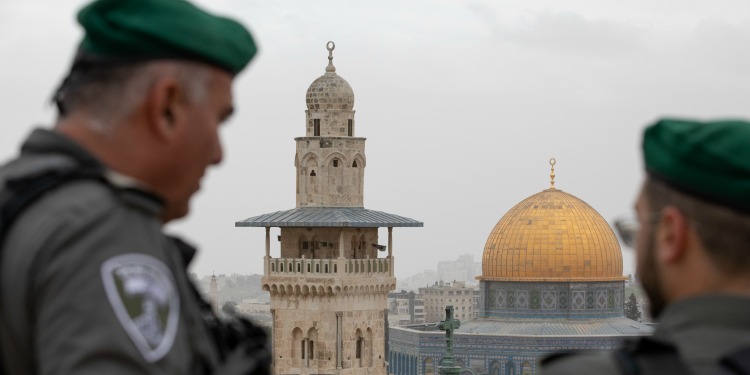
Photo Credit: IFCJ
But then the 1929 Palestine Riots occurred in August of that year. Taking shape as a protest over Jewish access to the holy site, the riots saw many Arab attacks on Jewish people in Jerusalem, as well as the destruction of Jewish property. The weeklong riots saw 133 Jews murdered, with hundreds more injured. After the events, the Islamic Waqf once again prohibited Jews from entering the Temple Mount. This ban would continue until 1948.
That year, Israel won her independence. And while the 1949 Armistice Agreement called for the resumption of normal functions on the Temple Mount, Jordanian control not only kept Jews from their sacred places, but led to the neglect and destruction of many sites in Jerusalem’s Old City.
Since Israel’s victory in the Six-Day War, the Jewish state has controlled access and security for the Temple Mount. However, the site itself is still administered by the Waqf, and the “Status Quo” includes such restrictions as: Jewish visits are restricted; Jews and non-Muslims can only visit Sunday-Thursday, for four hours per day; visits inside mosques are restricted; and Jews wearing religious garb may only visit while monitored by Waqf authorities.
Who Can Visit the Temple Mount?
As stated above, many restrictions remain for those wishing to visit the Temple Mount. Muslims have regular access to the Temple Mount for prayers and other religious activities. They may visit Al-Aqsa mosque, as well as other Islamic buildings on the site.
Non-Muslim visitors, as stated, also have the privilege of visiting the Temple Mount, however, their visits are restricted. They may only visit during designated visiting days and hours. Visitors must also follow a dress code that seeks to ensure modest and respectful attire. Those visiting the Temple Mount are also expected to conduct themselves in a respectful manner and keep from displaying any behavior that might be taken as either disruptive or provocative. Non-Muslim visitors are only able to enter the Temple Mount through the Mughrabi Gate.
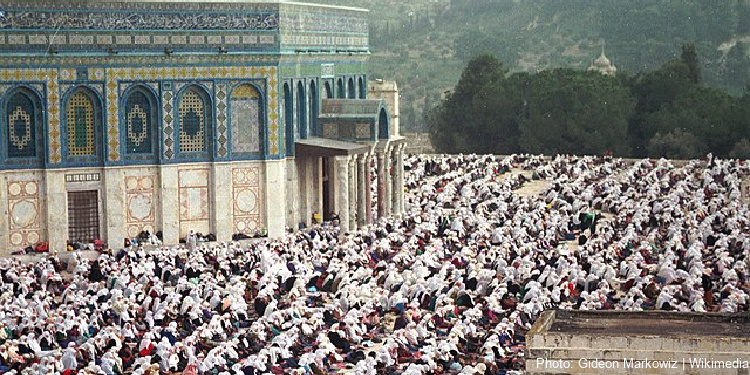
Photo Credit: Gideon Markowiz
During times of unrest and rioting, Israeli security has also limited Palestinian access in order to keep the peace. Palestinian residents of Jerusalem and Israeli Arabs are both permitted unrestricted access.
What Is the Foundation Stone?
The Foundation Stone is a rock situated at the center of the Dome of the Rock on the Temple Mount. According to Jewish tradition, it was from this rock that Creation began, from which God created the earth. Jewish tradition also tells us that it was near here where God gathered the earth from which he created man, Adam. And it was on this rock that Adam, Cain and Abel, and Noah all offered sacrifices to God, our Creator.
In Genesis 22, this is also the site of the story of Abraham and Isaac. For it was here, in what the Bible calls “the region of Moriah” that God told Abraham to “Take your only son… Sacrifice him there as a burnt offering on a mountain I will show you” (v. 2). That place, where God tested Abraham’s faith, is the Foundation Stone.
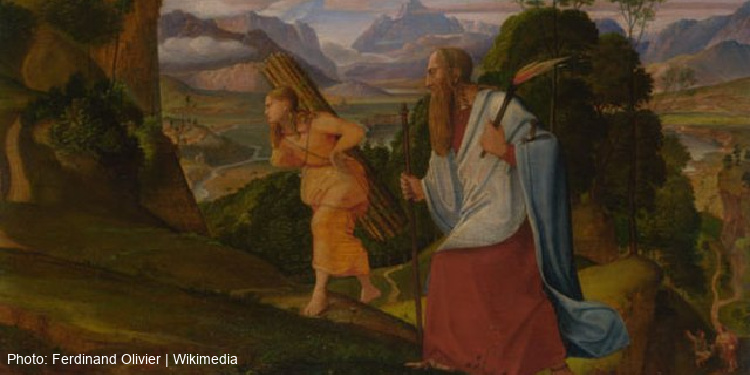
Photo Credit: Ferdinand Olivier | Wikimedia
The Foundation Stone also played a role in Jewish tradition after the story of Abraham and Isaac. It was the site of Jacob’s dream of a ladder, as well as the site where David offered a sacrifice after purchasing the land from Araunah the Jebusite. While David longed to build the Holy Temple on the site, God forbade him to do so, saying “You have shed much blood on the earth in my sight” (1 Chronicles 22:8). But God did allow David’s son, King Solomon, to build the Holy Temple, which he completed around 950 BCE.
Inside the Temple, was the Holy of Holies, and here the Foundation Stone is where the Ark of the Covenant was placed, making it the holiest spot in Judaism. after the destruction of the First Temple, the Ark of the Covenant disappeared, its location unknown to this day. So when Herod the Great constructed the Second Temple, there was no Ark on the Foundation Stone; instead, it is where the High Priest offered sacrifices during the Yom Kippur (Day of Atonement) service.
The Foundation Stone holds great significance for Christians, as well as Jews, not only for its importance throughout the Hebrew Bible, but for its role in the life of Jesus, as well. As Jesus visited the Temple during his time in Jerusalem, it connects Christians to his presence.
Today, the Foundation Stone is still atop the Temple Mount, located near the center of the complex, and lies on the floor of the Dome of the Rock. Below the Foundation Stone is a cavern known as the Well of Souls.
What Is the Dome of the Rock?
The history of the Temple Mount and the Dome of the Rock is intertwined through all of the centuries of religious, cultural, and political changes already mentioned.
The First Temple, of course, was built by King Solomon in the 10th century BCA, and was destroyed by the Babylonians five hundred years later. Herod the Great reconstructed the site for the Second Temple, which stood until the Romans destroyed it. Throughout these centuries, the Temple Mount served as the center of Jewish worship and the focus of Jewish life.
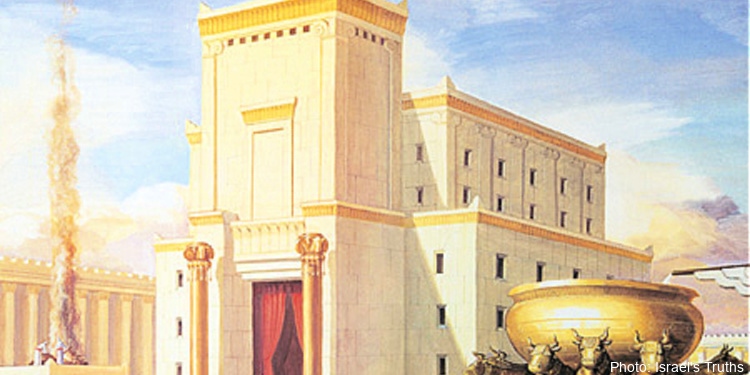
Photo Credit: Israel’s Truths
After the Roman destruction of the Temple, the site underwent many more changes as empires and religions came and went. In the 7th century, Muslims constructed the Dome of the Rock, completing it in 691 CE. This golden dome is not a mosque, but rather a shrine, and a focal point for those visiting Jerusalem and admiring its complex and rich tapestry of history and architecture.
Why Is the Temple Mount Holy?
As we have discussed, the Temple Mount holds great importance for Christians and Jews.
In Judaism, the Temple Mount is the holiest site. It is where both Temples stood, the central place for Jews to worship and the dwelling place of God. The Western Wall—all that remains of the Second Temple—is revered as a sacred place for prayer and pilgrimage.
For Christians, the Temple Mount carries great importance because of its connection to the Hebrew Bible, but to the life of Jesus, as well. The area around the Temple Mount is where many key events in Jesus’ life happened, including his teaching at the Temple and the final days before his crucifixion. Its location is a connection between Christians and the presence of Jesus.
Explore the Fellowship Blog
Stay up to date on the latest news in Israel and Jewish-Christian relations.


